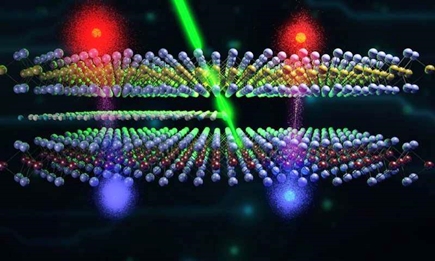|
NOVIDADES
Excitons are quasiparticles made from the excited state of electrons and—according to research being carried out EPFL—have the potential to boost the energy efficiency of our everyday devices. It's a whole new way of thinking about electronics. Excitons—or quasiparticles formed when electrons absorb light—stand to revolutionize the building blocks of circuits. Scientists at EPFL have been studying their extraordinary properties in order to design more energy-efficient electronic systems, and have now found a way to better control excitons moving in semiconductors. Their findings appear today in Nature Nanotechnology (Valley-polarized exciton currents in a van der Waals heterostructure).  Credit: EPFL
Last year, a team of scientists from EPFL's Laboratory of Nanoscale Electronics and Structures (LANES) announced that they had developed a transistor—one of the components of circuits—that runs on excitons rather than electrons (see article). And for the first time, they were able make the transistors function at room temperature, a major step forward for developing practical applications for this technology. To make the excitons last longer, the scientists layered two different 2-D materials on top of each other: tungsten diselenide (WSe2) and molybdenum diselenide (MoSe2). The resulting material had a shimmering texture that influenced how the quasiparticles were distributed. "With these two materials, the excitons tended to group together in specific places and prevent the current from flowing," says Andras Kis, the head of LANES and a coauthor of the study. To prevent that from happening, this time the research team added a middle layer of hexagonal form boron nitride (h-BN), which let them see the excitons and their energy levels more clearly. The research team also discovered a way to polarize the exciton currents, meaning the quasiparticles could eventually be used to encode data independently through variations in current magnitude as well as its polarization. That opens the door to even more applications in both coding and data processing on a nanoscopic level. By Sarah Perrin, Ecole Polytechnique Federale de Lausanne. Posted: Oct 23, 2019. |
|||||||||||||||||||||||||